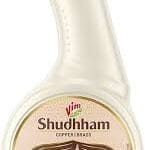Keyrings are everywhere, from our pockets to our bags, but they’re more than just functional items. Over time, keyrings have evolved into powerful branding tools, turning simple pieces of metal or plastic into symbols of identity and loyalty. Whether they feature a beloved brand logo or a custom design, keyrings today represent far more than the sum of their parts.
In this article, we’ll explore the fascinating evolution of brand keyrings, tracing their journey from humble beginnings to iconic status.
The Origins of Keyrings
Keyrings started as simple tools to keep keys organized and easily accessible. In the early days, they were purely functional, made from basic materials like metal rings or leather straps. However, as businesses began to recognize the potential of these everyday items, keyrings took on a new role. The first branded keyrings appeared as promotional giveaways, offering companies a unique way to keep their names in the hands and pockets of customers. These early branded keyrings were often simple, but they marked the beginning of a trend that would only grow stronger over time.
The Rise of Brand Keyrings as Marketing Tools
After World War II, the economy boomed, and so did the use of promotional merchandise. Companies seized the opportunity to use keyrings as affordable and effective marketing tools. During this time, brand keyrings became increasingly popular, with businesses across various industries using them to promote their logos and slogans.
As the demand for branded keyrings grew, so did the variety in their design. No longer limited to basic shapes and materials, keyrings began to reflect broader branding trends. Companies started experimenting with different materials, such as plastic, leather, and even wood, to create unique and memorable keyrings. These innovations not only enhanced the visual appeal of the keyrings but also made them more durable and versatile.
By the 1960s, brand keyrings had become a staple in marketing strategies, with many companies using them to build brand recognition and loyalty. The materials chosen for keyrings often aligned with the brand’s image—metal for durability, plastic for affordability, and leather for luxury. This period also saw the rise of keyring collectors, as people began to see these items as more than just functional objects but as symbols of their favorite brands.
Iconic Brand Keyrings through the Decades
1950s-1960s: The Birth of Iconic Brand Keyrings
The 1950s and 1960s were pivotal decades for the evolution of brand keyrings. Companies like Coca-Cola, Ford, and Shell led the way in creating keyrings that became iconic symbols of their brands. Coca-Cola, for instance, used keyrings to spread its logo far and wide, turning a simple everyday item into a piece of Americana. During this time, keyrings started to reflect popular culture, with designs often featuring mascots, logos, or other brand identifiers that resonated with the public.
1970s-1980s: Expanding the Horizons of Design
The 1970s and 1980s saw a significant evolution in the design of brand keyrings. Companies began to experiment with more complex shapes and materials, incorporating elements of pop culture into their designs. Keyrings became miniature works of art, with some featuring intricate designs, moving parts, or even sound effects. Brands like McDonald’s and Volkswagen created keyrings that not only advertised their products but also became collectibles in their own right. This era also saw the introduction of multifunctional keyrings, such as those that doubled as bottle openers or flashlights, adding both novelty and utility to the item.
1990s-2000s: The Digital Age and Globalization
In the 1990s and 2000s, globalization and the rise of technology influenced the evolution of brand keyrings. As tech companies emerged as global giants, they adopted keyrings as a means to reinforce their brand identity. Apple, for example, produced sleek, minimalist keyrings that echoed its design philosophy. During this time, keyrings also became more multifunctional, with brands incorporating USB drives, digital screens, and other technological innovations into their designs.
2010s-Present: Vintage Revival and Sustainable Design
Brands have tapped into nostalgia, creating keyrings that evoke past eras while still aligning with modern aesthetics. The 2010s also brought a focus on sustainability, with many companies opting for eco-friendly materials in their keyring production. Brands like Patagonia and Timberland have led the charge, producing keyrings made from recycled materials or biodegradable components. As consumers become more environmentally conscious, the demand for sustainable brand keyrings continues to grow, pushing companies to innovate in both design and materials.
Custom Brand Keyrings

In today’s market, customization is king, and custom brand keyrings are a perfect example of this trend. Companies increasingly offer personalized keyrings to cater to individual tastes and preferences.
The trend allows consumers to add their names, choose unique designs, or select specific materials, making each keyring a personal statement. Custom brand keyrings enhance consumer engagement by offering exclusive products that resonate personally with the user. Brands like Nike and Swarovski have successfully integrated custom keyrings into their marketing strategies, providing customers with unique and memorable items that strengthen their connection to the brand.
The Future of Brand Keyrings
Looking ahead, the future of brand keyrings promises to be as dynamic as their past. Technological innovations are likely to play a significant role, with possibilities including smart keyrings that integrate with digital devices or offer enhanced functionality.
Sustainability will also be a key focus, with brands exploring eco-friendly materials and production methods to appeal to environmentally conscious consumers. As consumer preferences continue to evolve, brand keyrings will adapt, reflecting broader trends in design, technology, and sustainability.
The next generation of keyrings will likely blend these elements, continuing to serve as both functional items and powerful symbols of brand identity.







